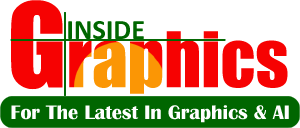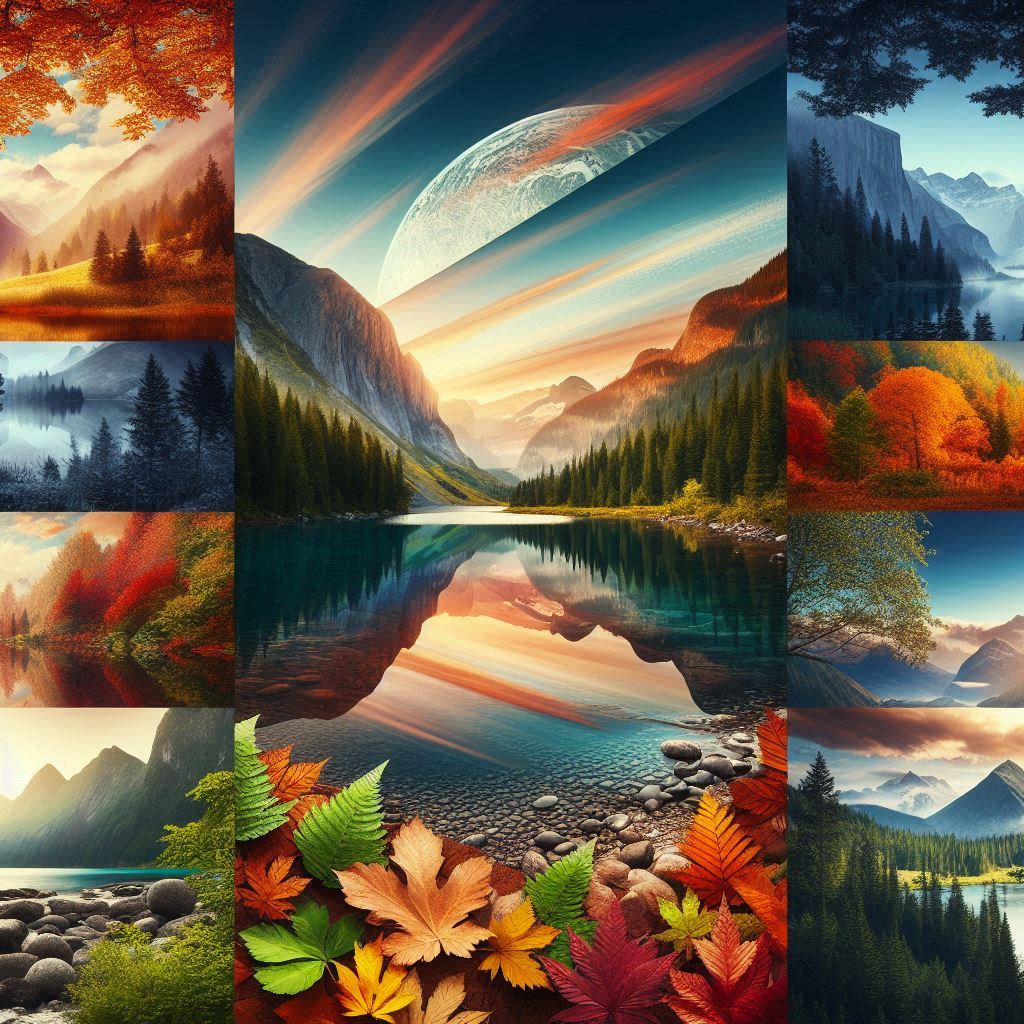1. AI-Driven Design Trends
- Generative AI Art:
Tools like MidJourney, Stable Diffusion, and DALL·E are pushing creative boundaries. Explore how AI-generated designs are being used in branding, advertising, and digital art.
Example: AI-generated landscapes for background art in marketing campaigns. - AI-Enhanced Customization:
Personalizing user experiences with AI tools like Adobe Firefly and Canva’s Magic Tools.
Trend: Designers use AI for creating dynamic, user-adaptive visuals (e.g., responsive banners tailored to user data). - Prompt-Based Creativity:
The rise of “prompt engineering” as a skill to produce unique visuals with AI tools. Tutorials can teach users how to refine prompts for best results.
2. Retro and Nostalgia-Inspired Design
- 90s Aesthetics:
Bright colors, bold patterns, and playful typography inspired by early web and Y2K aesthetics.
Trend: Use of grainy textures, VHS-style effects, and retro gaming-inspired art. - Vintage Revival:
Combining vintage styles with modern layouts (e.g., Art Deco mixed with futuristic elements).
Trend: Packaging design and branding for eco-conscious products with a retro twist.
3. Minimalism Meets Maximalism
- Minimalist Evolution:
Clean, bold designs with lots of white space, neutral tones, and strong typography remain evergreen.
Trend: “Less is more” with a focus on clarity and functionality (popular in web and app UI). - Maximalism Comeback:
Loud, colorful, and chaotic visuals are gaining traction. Think bold patterns, vibrant gradients, and layered visuals.
Trend: Designers creating playful chaos while maintaining usability.
4. 3D and Immersive Design
- Hyper-Realistic 3D:
The rise of realistic 3D renders in everything from product mockups to animated videos.
Example: Interactive 3D product models on e-commerce sites. - Abstract 3D Art:
Use of 3D tools like Blender and Cinema 4D to create surreal and abstract shapes, often paired with muted gradients.
Trend: 3D in branding and motion graphics to add depth and innovation. - Augmented Reality (AR) Design:
Graphics designed for AR experiences in marketing and apps.
Trend: Filters, interactive ads, and AR packaging design.
5. Experimental Typography
- Custom and Variable Fonts:
Designers are crafting custom fonts that adapt dynamically to user input or screen size.
Example: Variable fonts that shift weights or shapes as users interact with them. - Playful, Deconstructed Typography:
Breaking traditional rules to create chaotic yet visually appealing type.
Trend: Overlapping text, mixed fonts, and letters scattered across designs. - 3D and Animated Text:
Typography that pops out with 3D effects or subtle animations in digital projects.
6. Gradients and Vibrant Colors
- Modern Gradients:
Smooth, flowing gradients are being used for backgrounds, logos, and illustrations.
Trend: Iridescent and holographic gradients for futuristic vibes. - Vivid Color Schemes:
Bold, neon colors paired with dark backgrounds or muted tones for contrast.
Trend: Designers combining bright palettes with minimalistic designs for a striking balance.
7. Dark Mode Aesthetics
- Popularized by UI Trends:
Dark mode in apps and websites has influenced the overall aesthetic, with sleek, modern visuals catering to low-light environments.
Trend: High-contrast designs with neon highlights, metallic textures, and glowing effects.
8. Sustainable and Nature-Inspired Design
- Eco-Aesthetics:
Using natural textures, earthy tones, and organic shapes to reflect eco-friendly values.
Trend: Designs with recycled paper textures, muted palettes, and botanical illustrations. - Biophilic Design:
Incorporating nature-like elements into design, including patterns inspired by flora and fauna.
9. Motion Graphics and Video Trends
- Cinematic Motion Graphics:
Short, impactful animations used in storytelling, branding, and advertising.
Example: Parallax effects, seamless transitions, and scroll-triggered animations on websites. - Looping Videos and GIFs:
Small, seamless loops for social media and UI interactions.
Trend: Animated gradients, spinning icons, and dynamic background elements. - Interactive Micro-Animations:
Subtle animations triggered by user actions (e.g., hover effects, button clicks).
10. AI-Powered Design Automation
- Automated Layouts:
AI tools that generate entire page layouts based on user input.
Trend: Faster iterations for UI/UX projects and social media content. - AI-Powered Branding:
AI systems that propose cohesive branding strategies, from logos to complete visual identities.
Supporting Features for This Section:
- Interactive Trend Explorer:
Showcase examples of each trend with interactive elements like sliders or videos. - Case Studies:
Real-world examples of brands or projects successfully adopting these trends. - Downloadable Trend Reports:
Monthly or quarterly reports summarizing the latest trends in graphic design. - User Polls and Feedback:
Allow users to vote on their favorite trends or share their own creations inspired by these styles.

